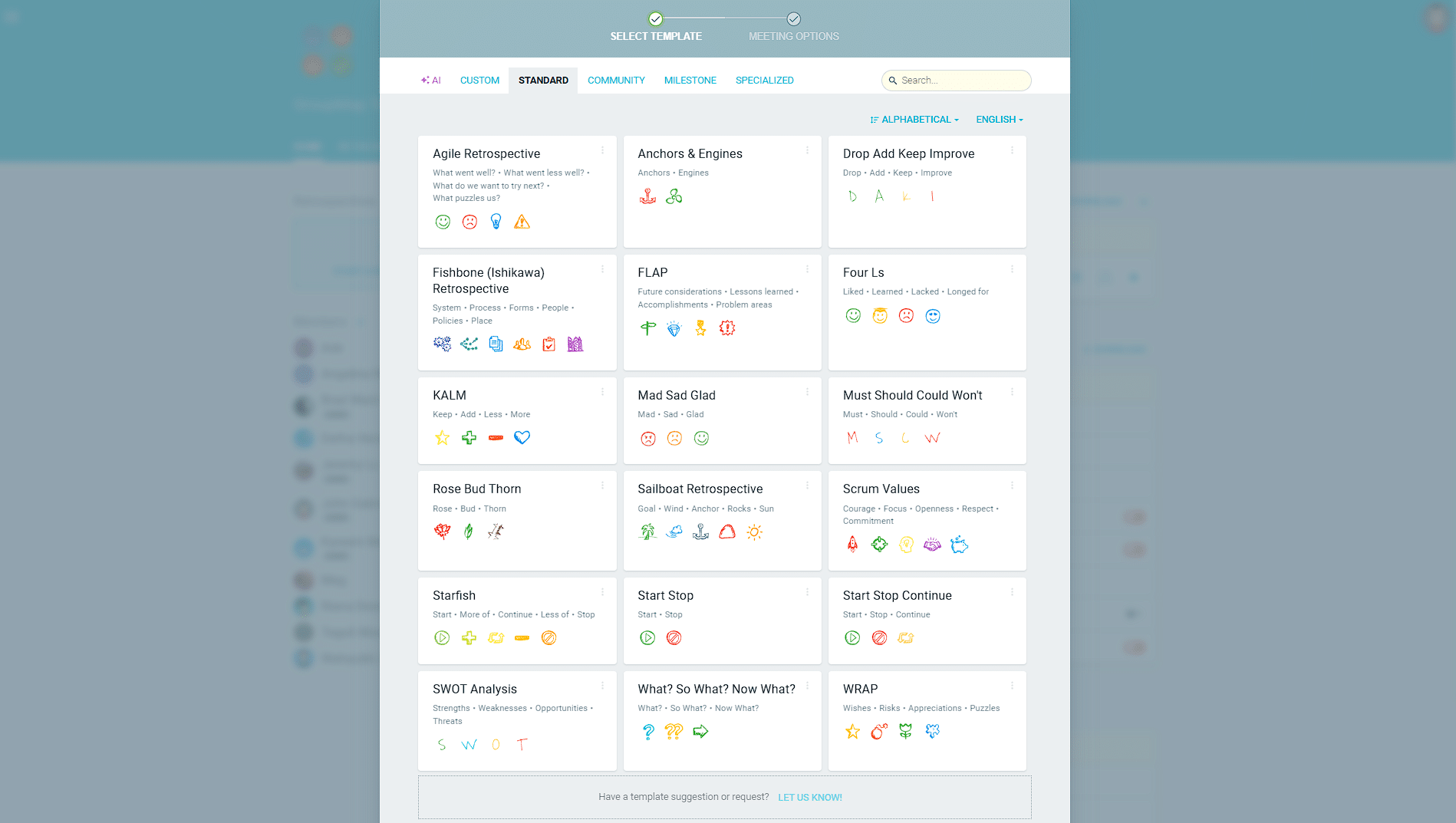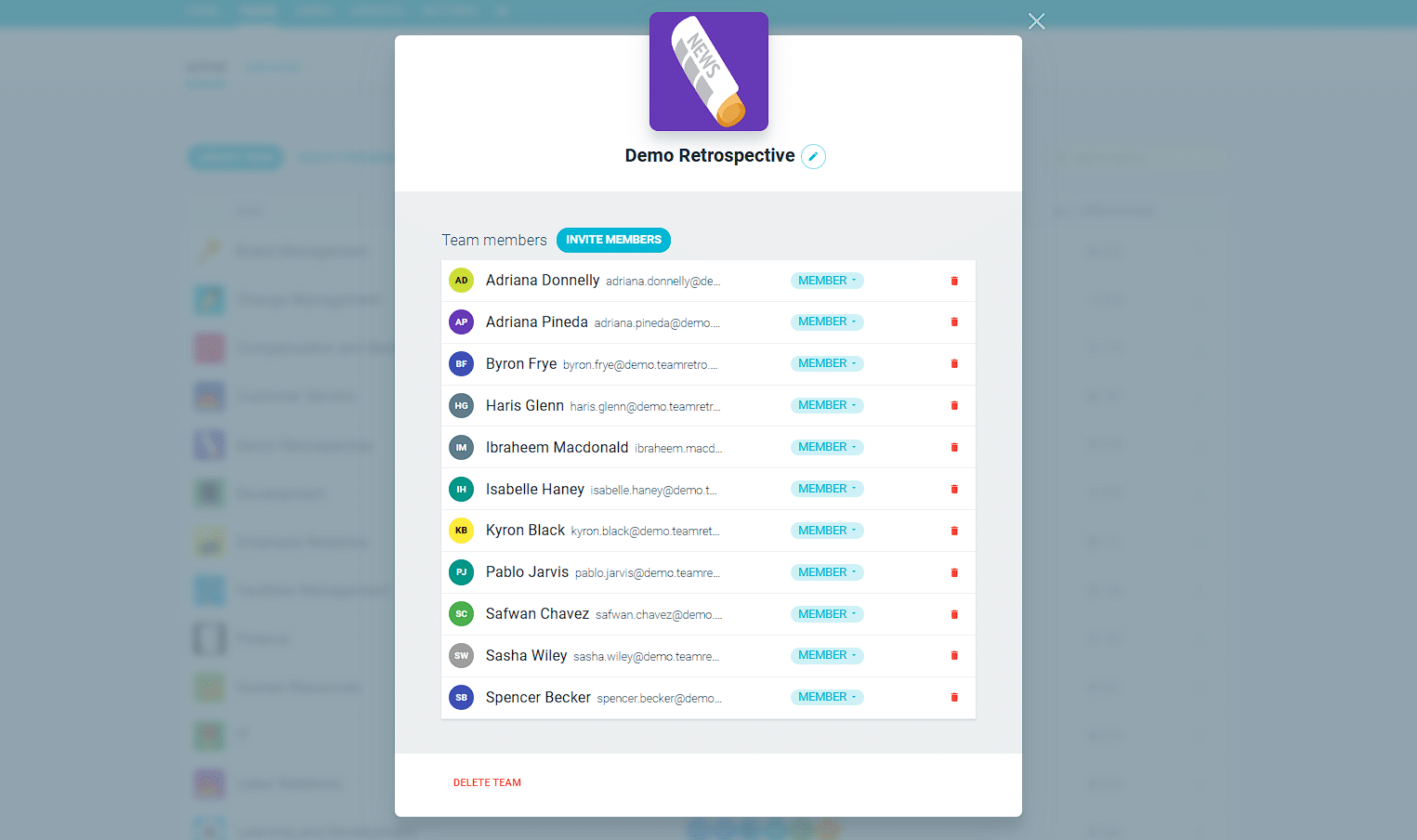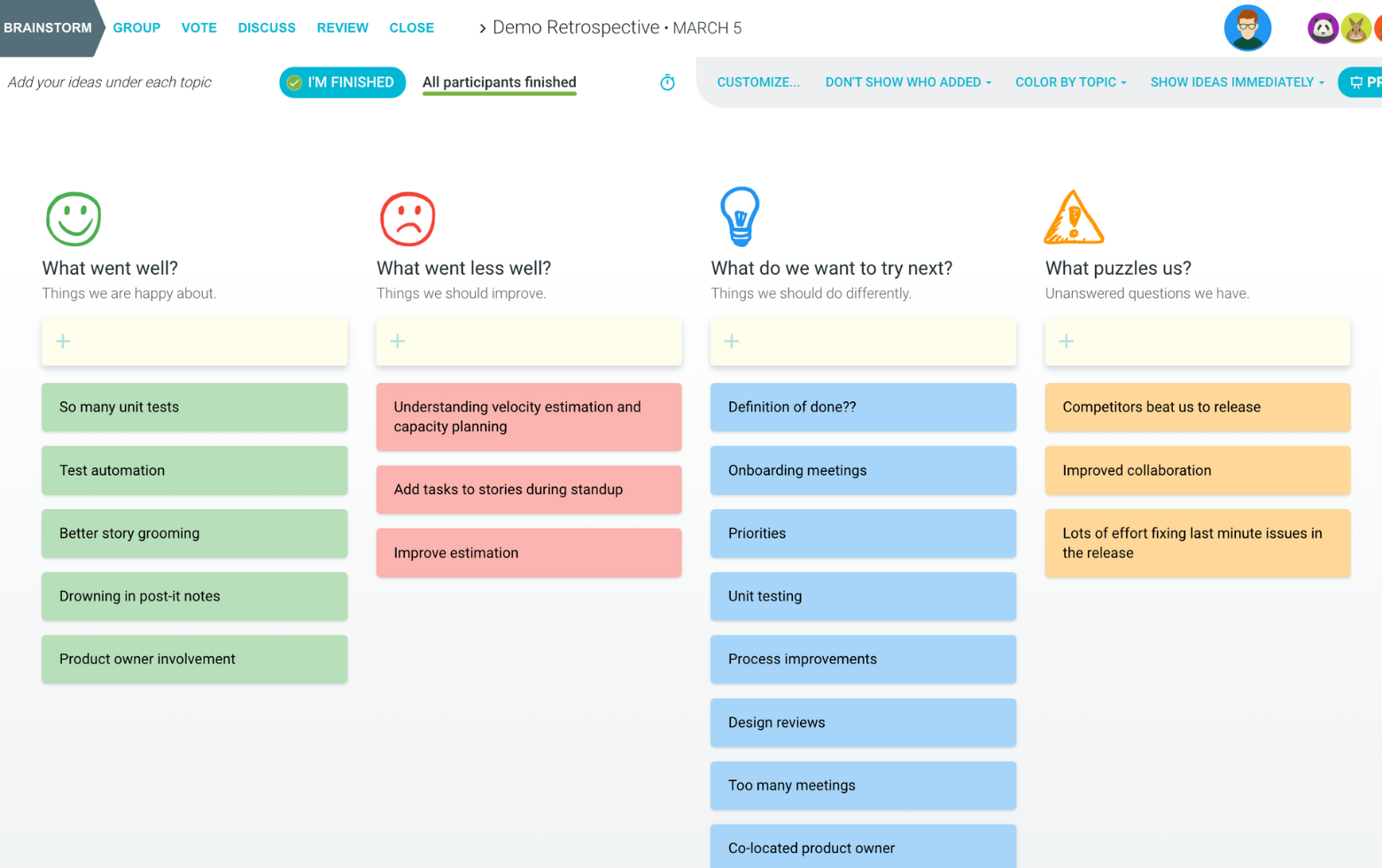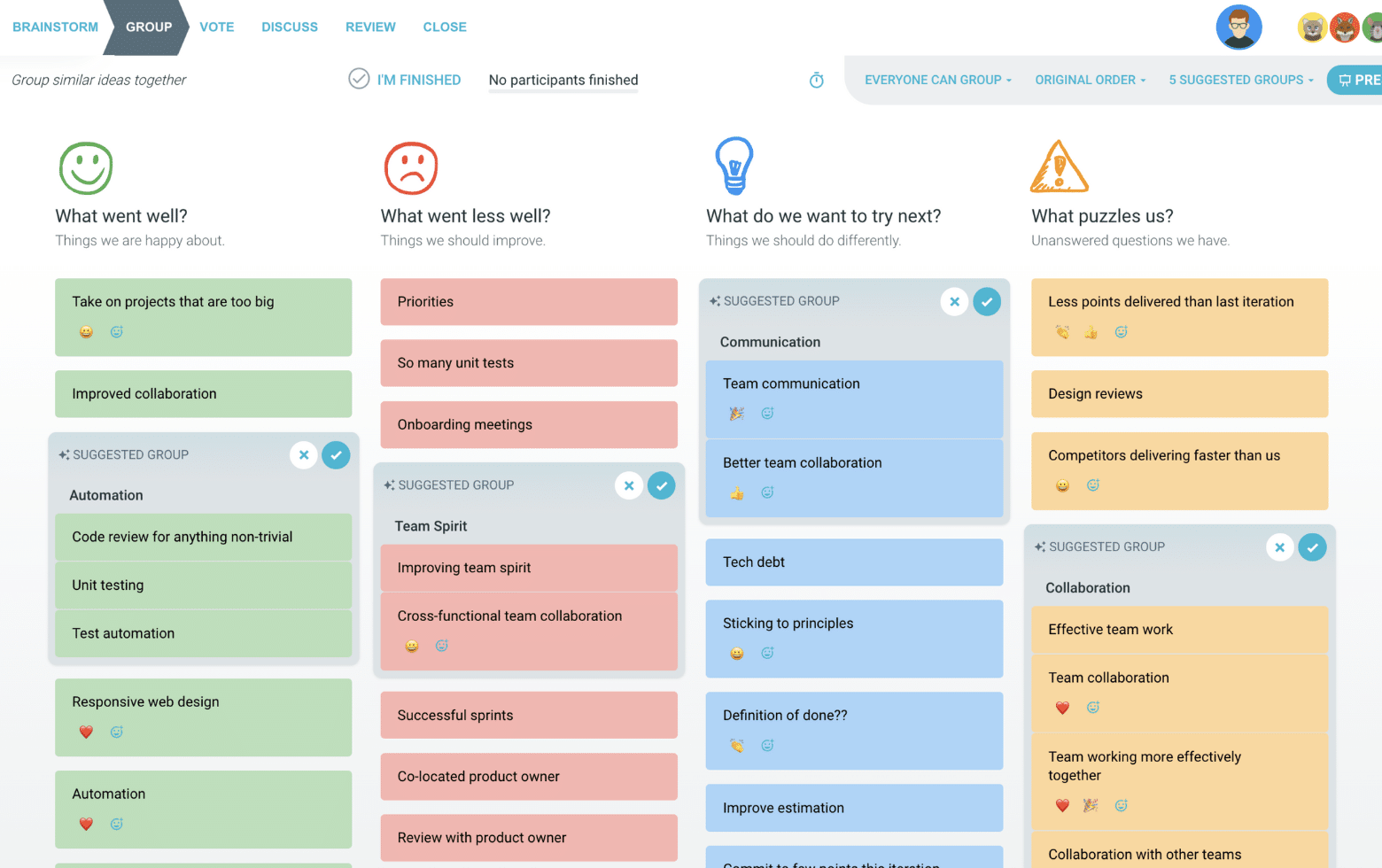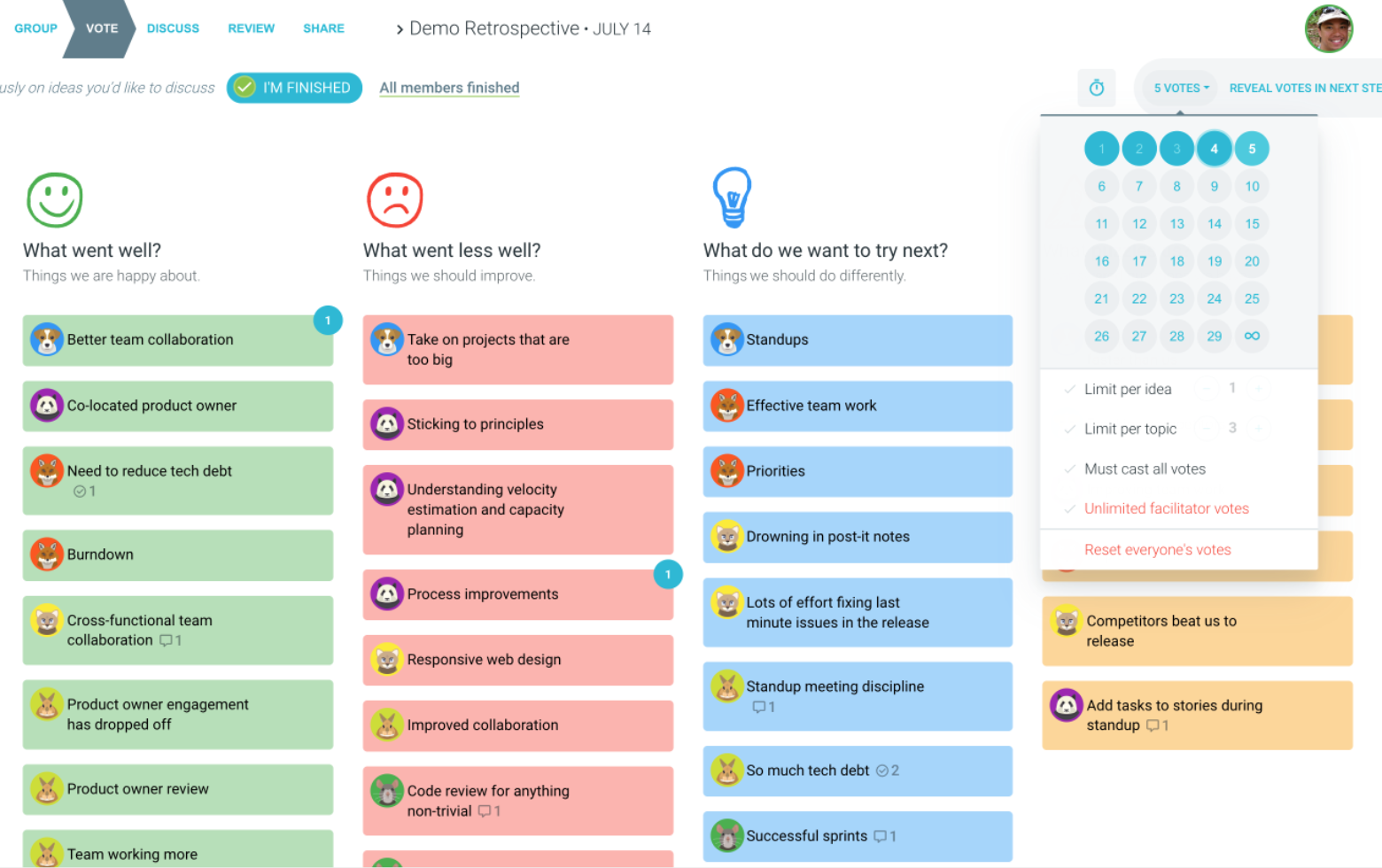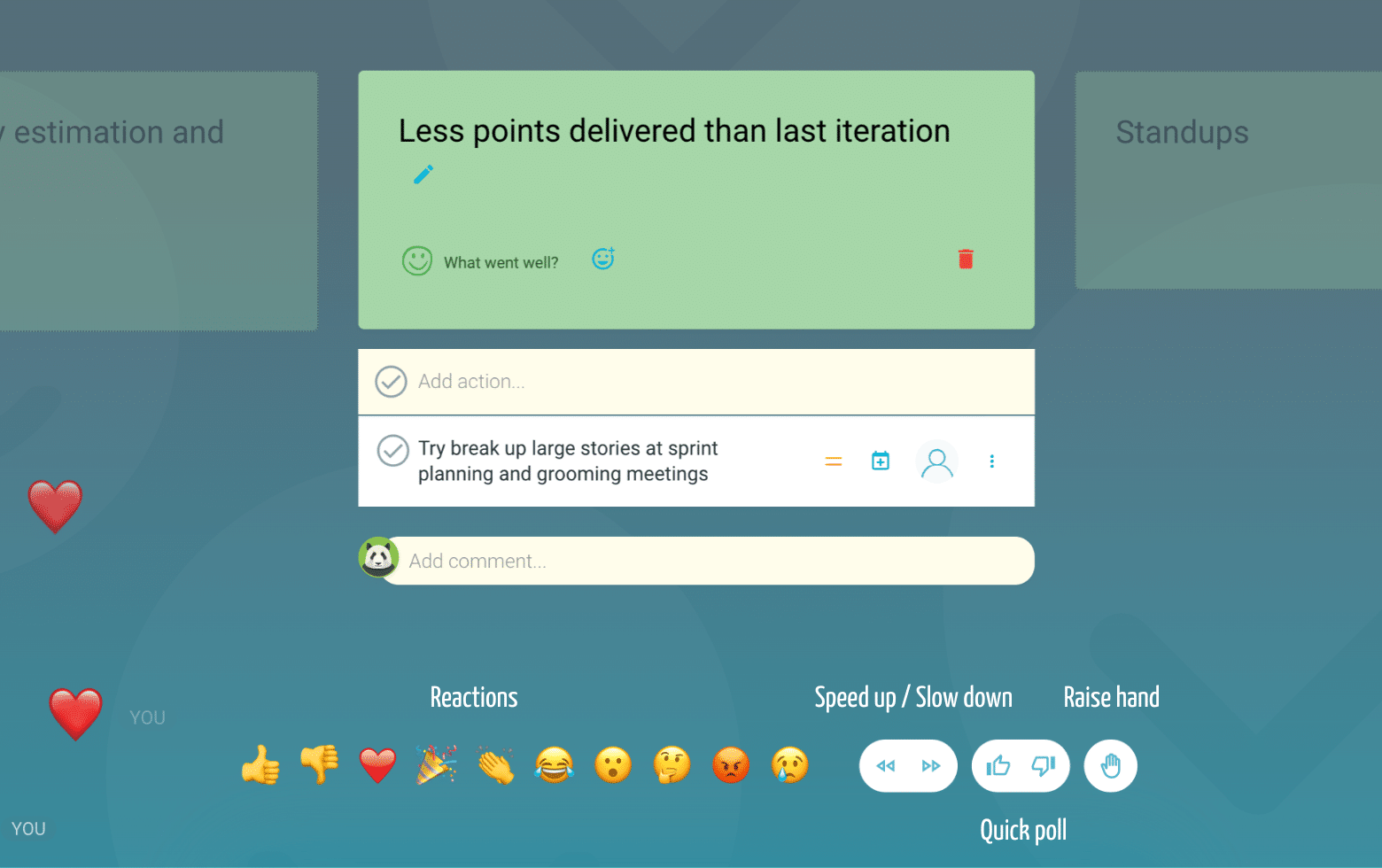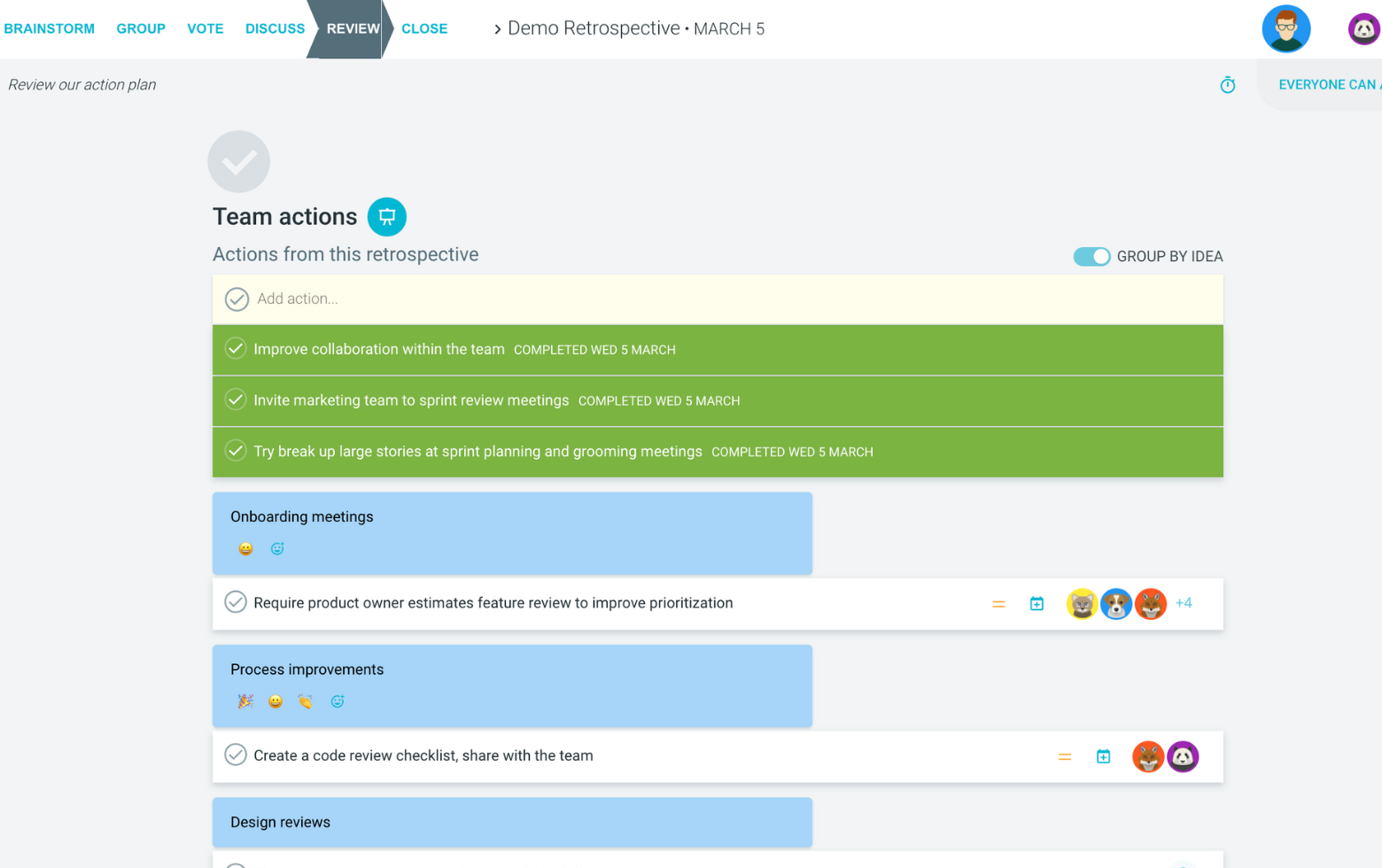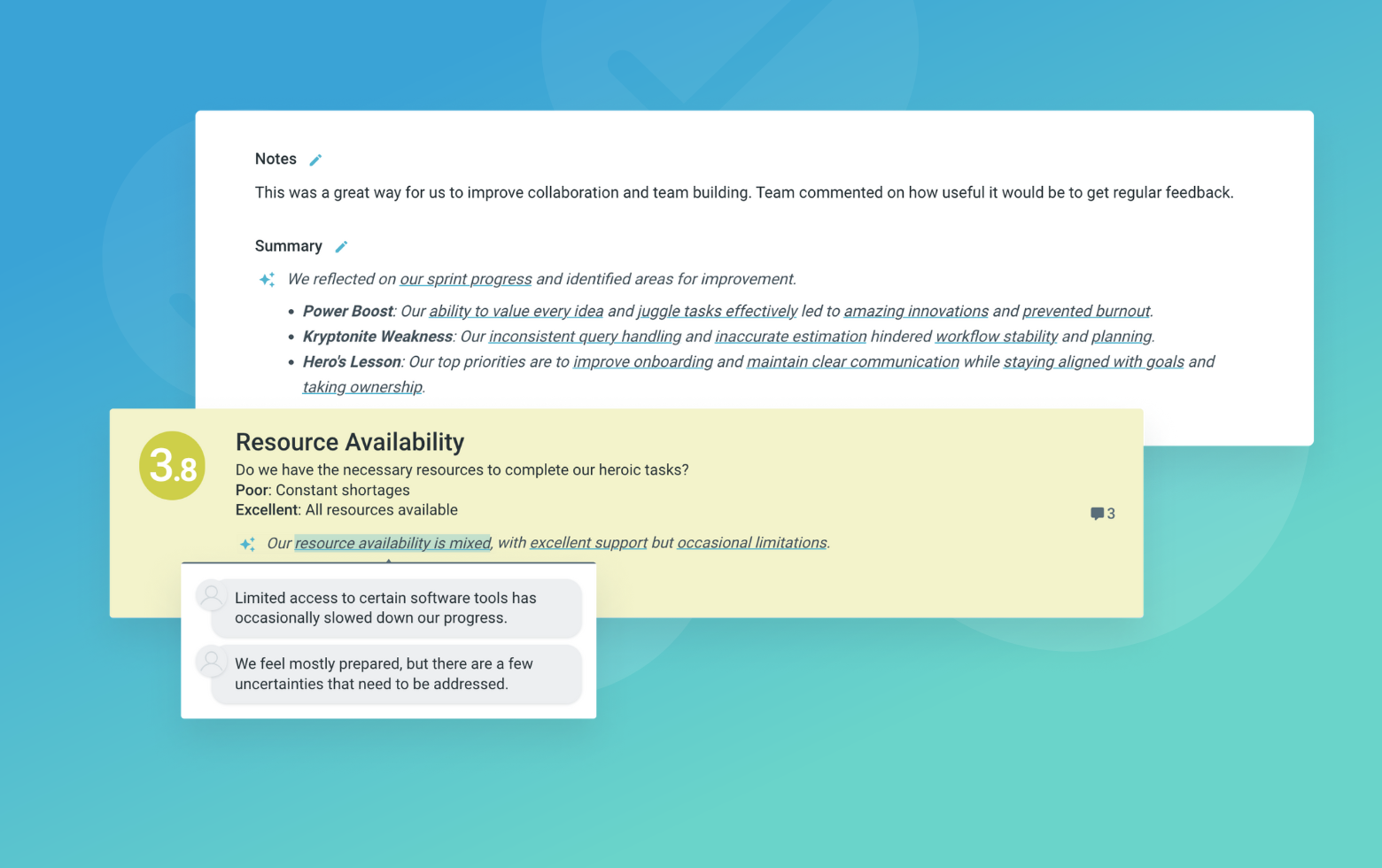The Fishbone (Ishikawa) Retrospective is a structured problem-solving approach that helps teams identify and understand the root causes of challenges or issues. Developed by Kaoru Ishikawa in the 1960s, this technique visualizes cause-and-effect relationships in a format resembling a fish skeleton.
During the retrospective, teams explore six key dimensions that might contribute to their challenges: Systems, Processes, Forms, People, Policies, and Place. This comprehensive analysis ensures no potential factor is overlooked, leading to more effective solutions.
This method is particularly valuable for teams dealing with complex problems where multiple factors may be at play. By organizing potential causes into distinct categories, teams can better understand the relationships between different issues and develop targeted improvements.
What is The Fishbone (Ishikawa) Retrospective
System
What technology, software, or tools might be affecting our team's performance or outcomes?
Guide the team in examining technical infrastructure, software tools, and systems integration points. Encourage participants to think about both obvious technical issues and subtle system interactions that might impact their work.
Process
What workflows or sequences of activities are causing delays or inefficiencies in our work?
Focus on identifying bottlenecks, redundancies, or gaps in workflows. Help the team distinguish between process issues and other factors by asking about specific steps in their work procedures.
Forms
What issues with our templates or documentation could be impacting clarity or accuracy?
Examine documentation quality, accessibility, and completeness. Consider both formal and informal documentation, and how well it serves its intended purpose.
People
What factors related to individual or team skills, communication, or roles are affecting our success?
Address team dynamics and individual contributions while maintaining a blame-free environment. Focus on systemic issues rather than personal criticism.
Policies
What guidelines or rules might be misaligned with our actual practices or creating challenges?
Explore both formal and informal policies that impact work. Consider whether policies support or hinder current team needs and practices.
Place
What aspects of our physical or virtual workspace might be impacting our collaboration or productivity?
Consider both physical and virtual work environments. Include factors like tools, workspace layout, and remote collaboration capabilities.
Suggested icebreaker questions
- If our team were a machine, what part would need the most maintenance right now?
- What's the most surprising solution you've discovered to a recurring problem?
Ideas and tips for your retrospective meeting
- Start with the effect or problem statement clearly defined at the 'head' of the fish
- Encourage equal participation from all team members across all categories
- Focus on identifying causes rather than jumping to solutions too quickly
- Use the 'Five Whys' technique within each category to dig deeper into root causes
- Document all insights, even if they don't initially seem significant
- Schedule enough time (90-120 minutes) to explore all categories thoroughly
.
How to run effective meetings with TeamRetro
Start Your Session in a Click
Log into TeamRetro and choose your template. Customise questions and the workflow to create your perfect retro for your team.
Create Your Team Easily – No Separate Accounts Needed
Brainstorm Individually – Free From Bias
Smart Grouping for Faster Insights
Fair, Flexible, and Fast Voting
Engage, React, and Capture Key Insights
Walk your team through ideas one by one with Presentation Mode. Stay in sync, spark real-time discussions, and capture feedback with comments, live reactions, and polls—all in one place.
Turn Ideas Into Action
Propose next steps with team buy-in, get AI-powered action suggestions, and keep everything in one place. Committed actions sync to your personal dashboard and integrate with your workflow tools—keeping you on track.
Save, Share, and Stay on Track
Get quick AI-powered summaries, add facilitator notes, and store retrospectives in your library for easy access. Schedule your next session and track published actions to keep your team accountable at the next retro.
Turn Team Data into Actionable Insights
Uncover trends, common themes, and key engagement metrics at a glance. Track sentiment shifts, analyze conversations, and monitor completed actions to drive continuous improvement.
